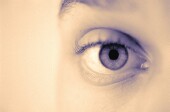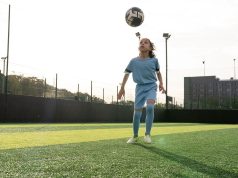Could serve as measure of severity of concussion-related ocular motility disruption
THURSDAY, Jan. 29, 2015 (HealthDay News) — Eye tracking may help quantify the severity of disconjugate eye movements associated with concussion and brain injury, according to a study published online Jan. 12 in the Journal of Neurotrauma.
Uzma Samadani, M.D., Ph.D., from the New York University School of Medicine in New York City, and colleagues developed an algorithm for eye tracking in which the Cartesian coordinates of the right and left pupils are tracked over 200 seconds and compared to each other as the patient watches a short film clip moving inside an aperture on a computer screen. Eye tracking was conducted in 64 healthy, noninjured controls and 75 trauma patients with either a positive head computed tomography scan (CT; 13 individuals), negative head CT (39 individuals), or non-head injury (23 individuals).
The researchers found that all five measures of horizontal disconjugacy were increased in positive and negative head CT patients, compared to non-injured controls. In brain injured patients, only one of five vertical disconjugacy measures was significantly increased compared to controls. Three metrics for horizontal disconjugacy negatively correlated with the SCAT3 clinical concussion symptom severity score and positively correlated with total Standardized Assessment of Concussion score in all trauma patients.
“Abnormal eye tracking metrics improved over time towards baseline in brain injured subjects seen in follow-up,” the authors write.
Two authors disclosed financial ties to a company that licenses patents related to this research.
Copyright © 2015 HealthDay. All rights reserved.








